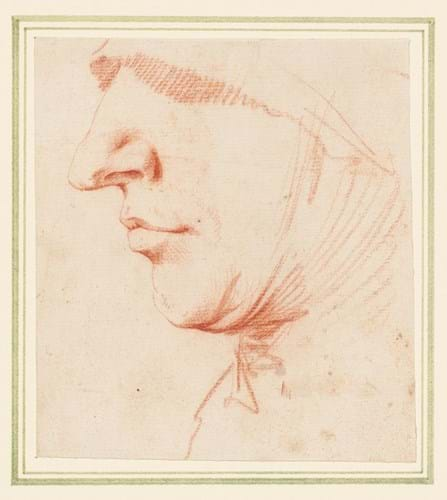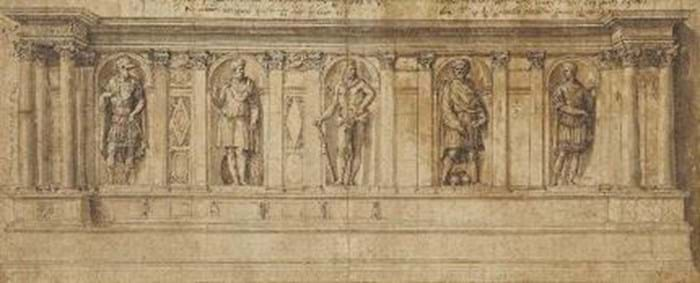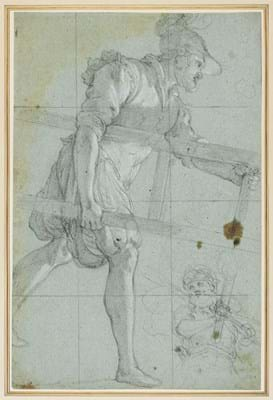Sewell will be best remembered for his renowned wit and stinging criticism both in his newspaper columns and on TV. As a collector though, he had a not inconsiderable talent for spotting rarities.
Having graduated in art history at the Courtauld Institute, he worked at Christie’s as a picture specialist for almost nine years between 1958 and 1967, and it will be his former employers who will offer his collection in a single-owner sale at their King Street rooms on September 27.
With around 200 lots of Old Masters, Victorian and 20th century British art, estimates range from £600 to £600,000.
Christie’s UK Chairman Orlando Rock said: “Brian Sewell was, undoubtedly, one of Christie’s most colourful and learned former colleagues. What always motivated him was his love of great art and its power to move and inspire, combined with his characteristic and acerbic wit.”
Mystery Sketch
One of the Sewell’s notable finds was a finely executed study on paper of a soldier carrying a ladder. While the identity of the artist has long been a mystery, the drawing has now been attributed to the Florentine artist Agostino Ciampelli (1565-1630) by Dr. Julian Brooks – the recently appointed senior curator and head of drawings at the J. Paul Getty Museum.
The technique of using black chalk heightened with white on blue paper was found to be characteristic of Ciampelli in the late 16th century, while the subject of the two figures (one with a ladder and the other a torch) was deemed to relate to a Medici marriage in 1589.
Volterra’s Dido
Another work in the collection is an unframed but accomplished black chalk drawing of Dido reclining. Sewell acquired it in the early 1960s as a work by a follower of Michelangelo.
Here, Christie’s own research has led to a new attribution to Daniele da Volterra (1509-66) – an artist associated with Michelangelo and who was famously commissioned to ‘make decent’ the nudes in Michelangelo’s Last Judgment fresco by adding strategically-placed loincloths to the figures.
The drawing at Christie’s is estimated at £100,000-150,000.

‘A man’s head in profile’, a 5.5 x 5in (14 x 13cm) red chalk drawing by Jusepe de Ribera that is estimated at £6000-8000 at Christie’s sale of the Brian Sewell collection.
Other discoveries made during the cataloguing of the Sewell collection include:
- A red chalk drawing of a man’s head in profile which was thought typical in technique to Jusepe de Ribera (1591-1652) – estimate £6000-8000
- A two-sided study in oil on paper attributed to Domenico Tintoretto (1560-1635) which was discovered to have associations with a series of pictures in the Basilica di Santa Maria Gloriosa dei Frari in Venice.

A study of five niches containing figures of ancient heroes by Baldassare Peruzzi. Likely executed as a design for a ceremonial bench in Siena, it is estimated at £100,000-150,000 at Christie’s sale of the Brian Sewell collection.
Among the other works on paper on offer, a view of the Schmadribach Waterfall near Lauterbrunnen which was identified by Sewell as by Joseph Anton Koch (1768-1839) from 1794 is estimated at £20,000-30,000.
The earliest drawing in the collection is also expected to spark interest – a known study by artist and architect Baldassare Peruzzi (1481-1536) which carries an £100,000-150,000 estimate.
The work with the highest expectations in the Sewell collection however is one of three paintings by Matthias Stomer (c.1600-1652). Entitled Blowing Hot, Blowing Cold, it is pitched at £400,000-600,000.
The sale will also offer Modern British art by the likes of Sewell’s loyal friend Eliot Hodgkin (1905-87) and a study of Lucian Freud by John Craxton from 1946 that is estimated at £50,000-80,000.









